2002 North Main Street
Santa Ana, California 92706
TEL: 714.567.3600
Jolting Jack-o’-Lanterns: Pumpkins of the Bowers
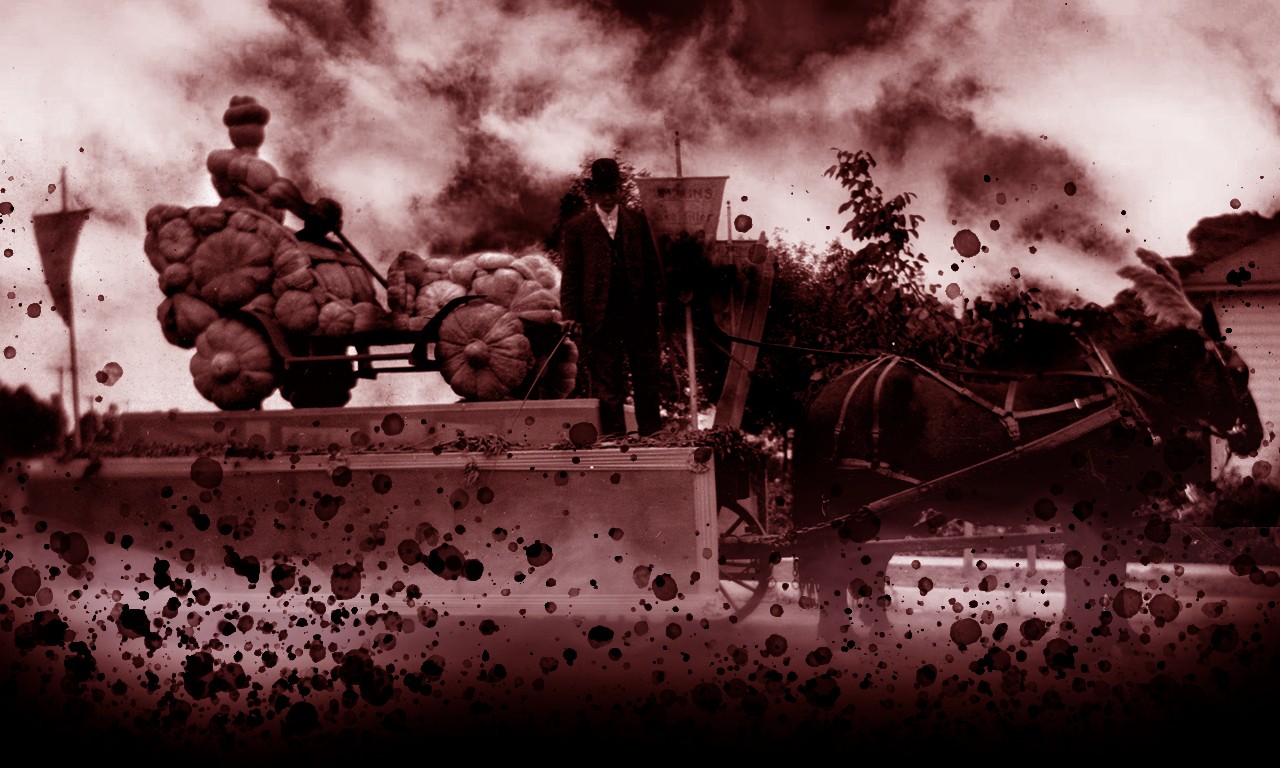 |
| Doctored version of 81.11.25B Gift of Mrs. D.C. Edwards |
Pumpkin Among Kin
Though pumpkins take a great many autumnal forms—not the least of which are the delicious Thanksgiving staple of pumpkin pie or the PSLs (pumpkin spice lattes) first brewed in the corporate cauldrons of Starbucks—perhaps the most iconic are the carved pumpkins seen before and on Halloween. The oft-orange gourds are endemic only to the Americas, meaning that the tradition of carving them is a synthetic one which first originated in the United States. The far earlier Irish and northern Scottish tradition of turnip carving around the Celtic holiday of Samhain produced truly monstrous artifacts. When Irish immigrants came to the United States in the 19th century, they took advantage of the larger surface area of American gourds and produced the first carved pumpkins. Given Halloween’s looming arrival, this post takes a close look at some of the pumpkins featured in the Bowers Museum’s collections!
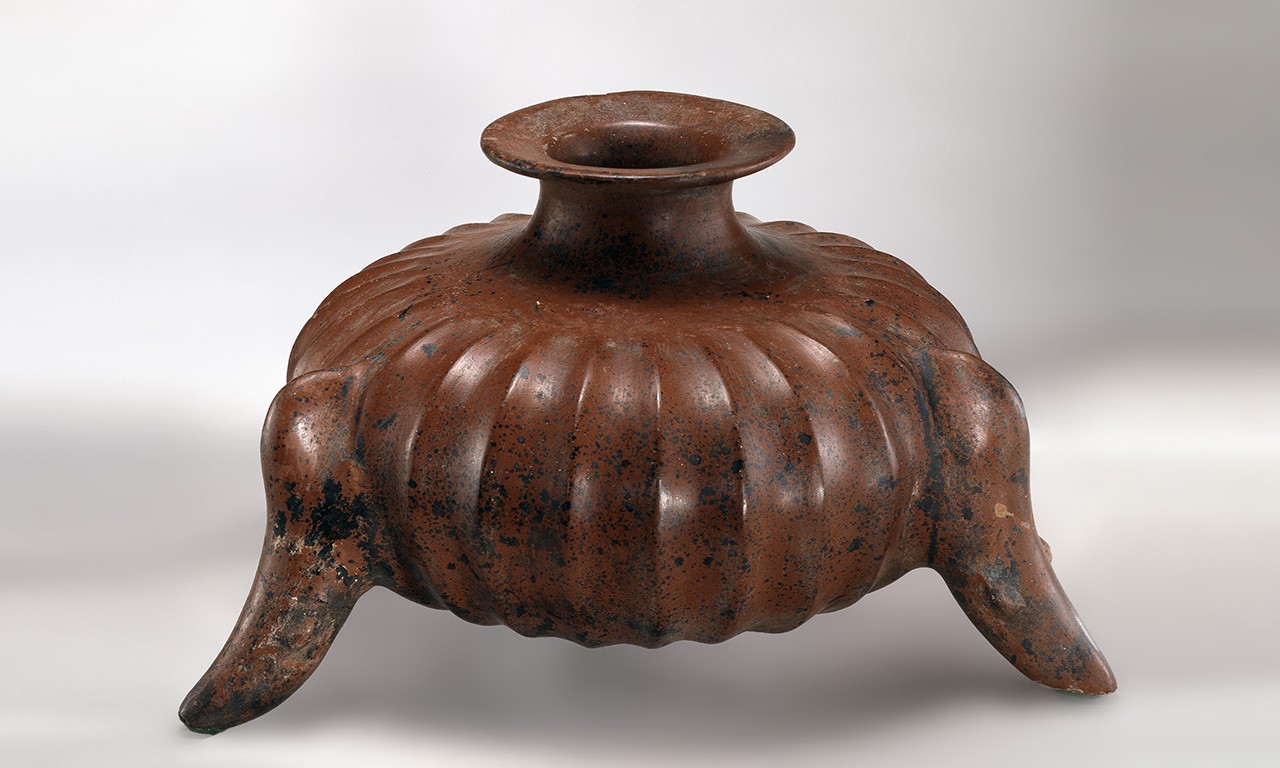 |
| Vessel in the Form of a Gourd, 100-500 West Mexico Shaft Tomb culture; Comala style; Colima, West Mexico Ceramic and paint; 8 5/16 x 14 3/4 in. 85.34.2 Gift of Mr. Pete Szuch |
Evolving Form
The first pumpkins seem to have originated from Central America about 7,500 years ago. Small, hard, and bitter, they would have hardly resembled the gourds that we are used to today. They were wonderfully useful though, as everything but the stem could be eaten or repurposed. Pumpkin-meal was made by drying and grinding the gourds and could be made into bread, seeds could also be dried and eaten as they still are today, pumpkin fibers could be woven, and the whole gourd could be hollowed out for use as a vessel. Pumpkins and similar gourds were very important to the cultures of modern-day West Mexico who created ceramics mimicking their rounded, lobed shape. Theories about this vessel suggest that it may have symbolized or helped assure a plentiful harvest, what we know for certain is that its owner felt it was important enough to bring to their next life.
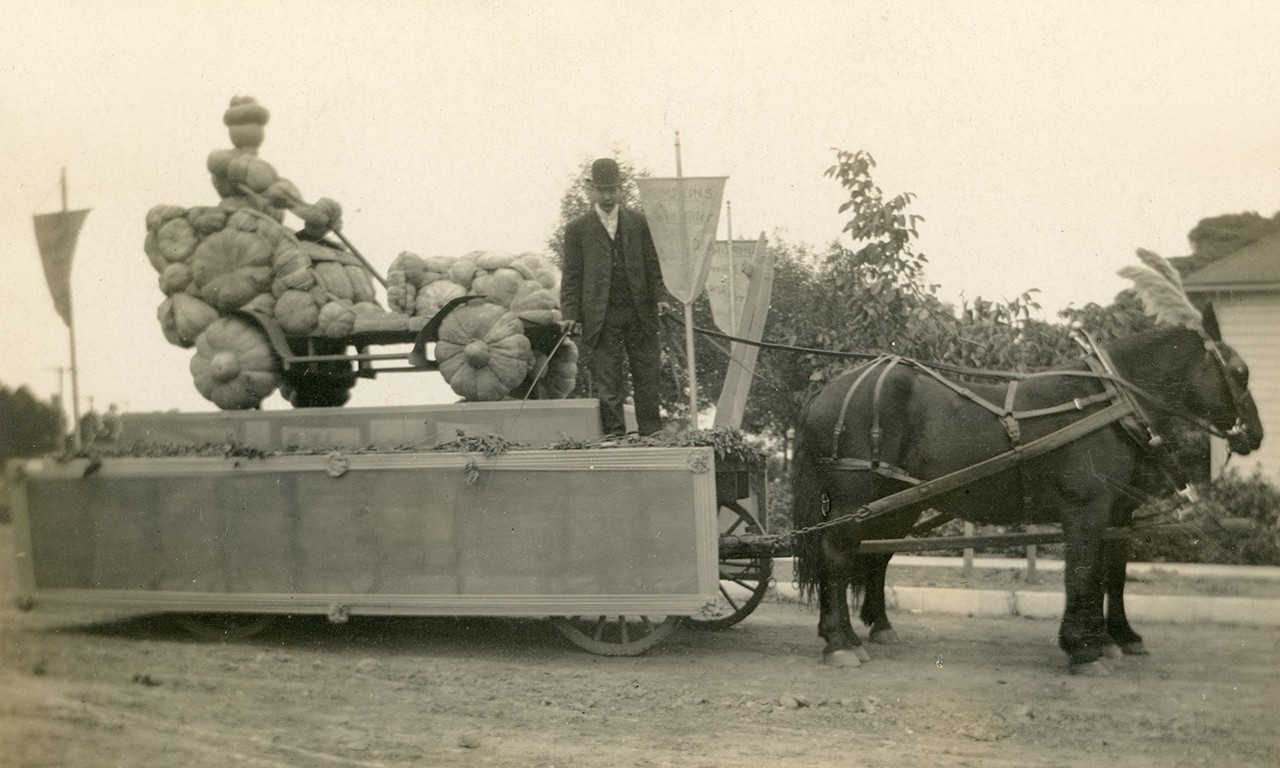 |
| Parade Float of Pumpkins, 1906 Unknown Photographer; Santa Ana, California Postcard; 3 1/2 x 5 1/2 in. 81.11.25B Gift of Mrs. D.C. Edwards |
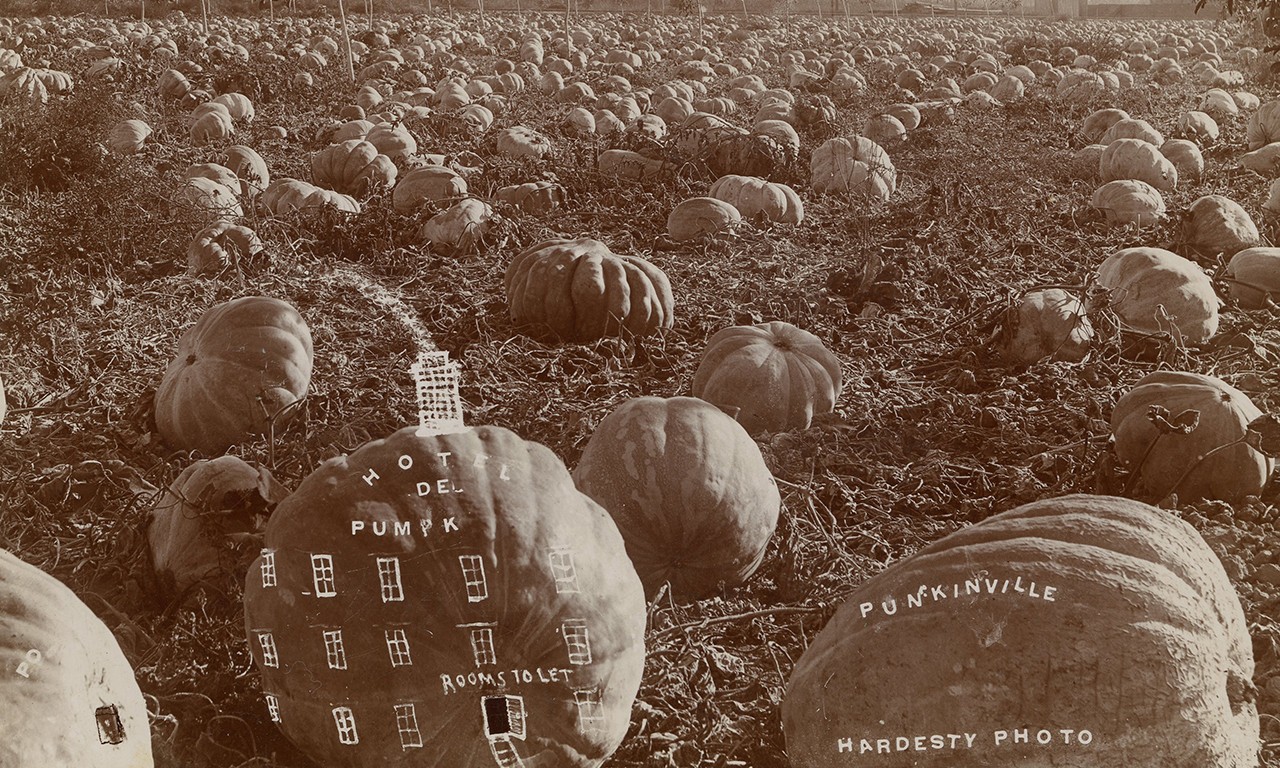 |
| Pumpkin Patch in West Orange County, c. 1900 Terry Elmo Stephenson Sr. (American, 1880-1943); Orange County; California Photographic print; 6 1/2 x 4 in. 7024.3 Terry E. Stephenson Collection |
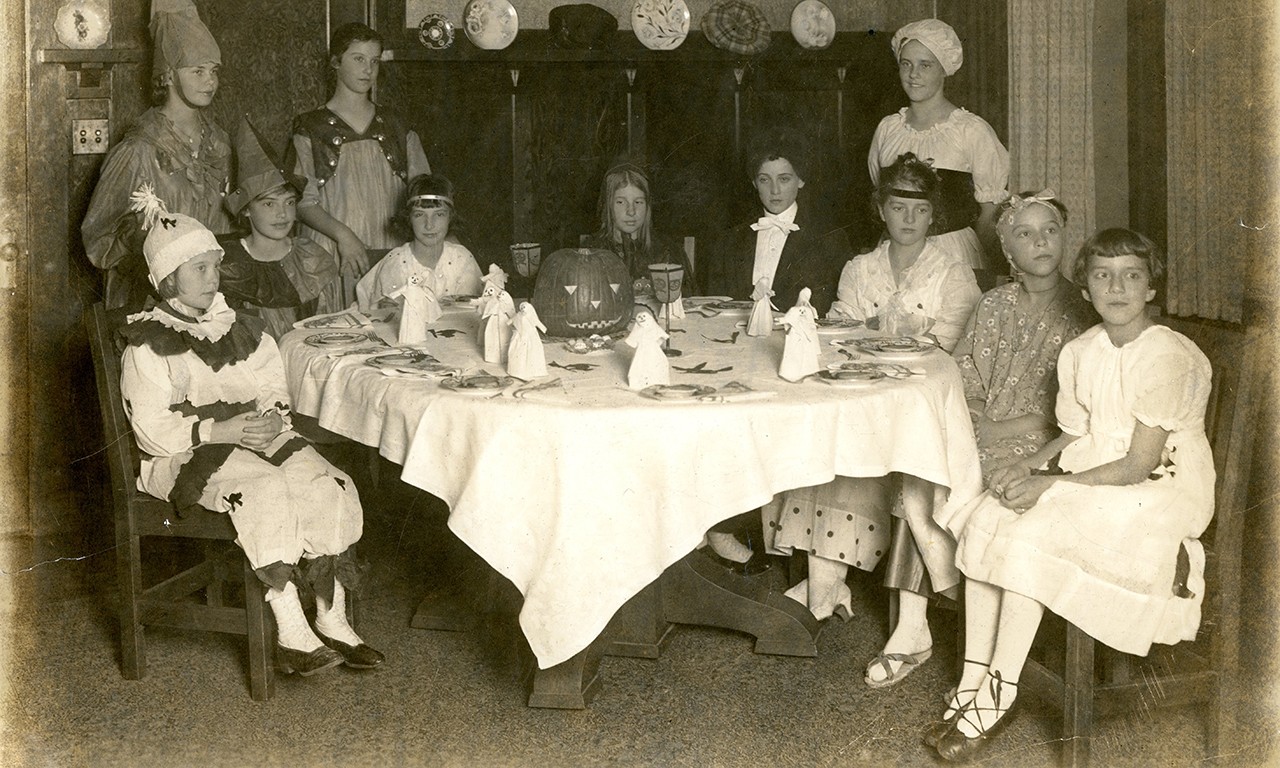 |
| Halloween Party, 1915 Unknown Photographer; Santa Ana, California Photographic print; 8 x 10 in. 37205 Gift of Mrs. Willela Smith Westmoreland |
Gourdgeous on Camera
Pumpkins, both warty and whimsical, are wildly picturesque. Whether they are center frame or snapped by happenstance they tend to end up in their fair share of fall photographs. As a happy and educational coincidence, the photographs in this post illustrate the importance of the fruit in the early history of Santa Ana. One image’s mysterious man holding a riding crop appears for all the world that he is threatening to turn the next would-be trespasser into a pumpkin sculpture, but this could not be further from the truth. Accounts of the very first Orange County Fairs mention that one of the attractions was coming to see gargantuan pumpkins. The Parade of Produce, which this float was a part of, also came to be an important part of the Fair. The ominous man on the float is in fact, just advertising his hearty crop. Hotel Pumpkin may have been a little fun by Terry E. Stephenson Sr. It indicates that the West Orange County Southern Pacific Depot was surrounded by a pumpkin patch around 1900. Finally, a Santa Ana home’s 1915 Halloween party shows that children were enjoying jack-o’-lanterns over a century ago.
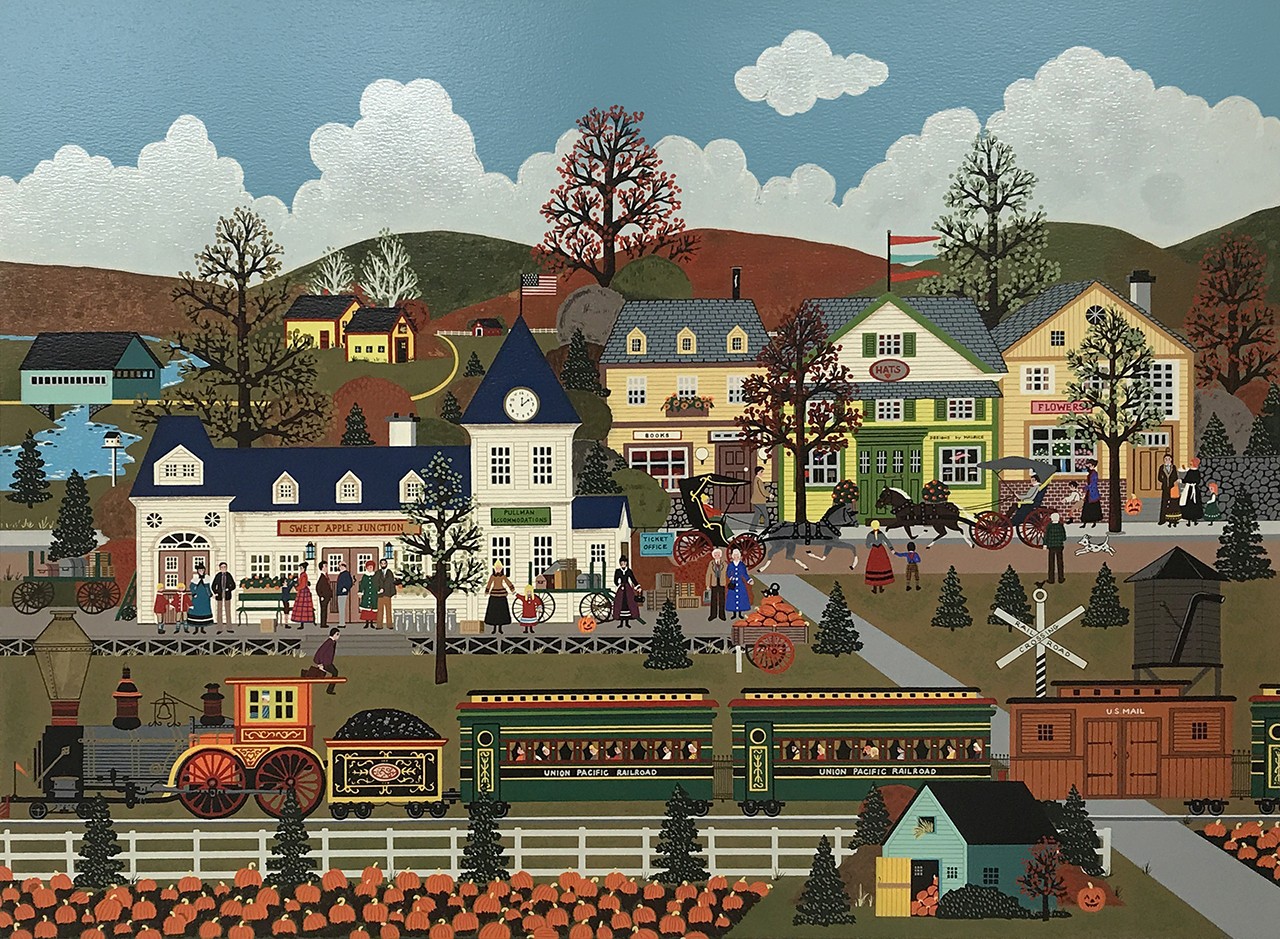 |
| 12:09 On Time Again!, 1989 Jane Wooster Scott (American, 1920-) Serigraph; 23 x 30 in. 94.56.5 Gift of Mr. Barry Fitzmorris |
Wooster Pack
If you recognize the works of Jane Wooster Scott, it is quite possibly because you have assembled a puzzle of one of her charming seasonal paintings. At one time she held the Guinness World Record for being the Most Reproduced Artist, an accolade which was no doubt earned due to the large runs of the prints that she made based on her paintings and her knack for merchandising her artworks. As if aware of this factoid, the Bowers Museum has no less than eight copies of this print, 12:09 On Time Again! This is a moderate number when compared against our twenty copies of Downtown Saturday Night, also by Jane Wooster Scott. 12:09 On Time Again! earns its place in this post with an awesome abundance of pumpkins both in a field in the foreground, on a cart in the midground, and nestled away on stoops and in a minute barn.
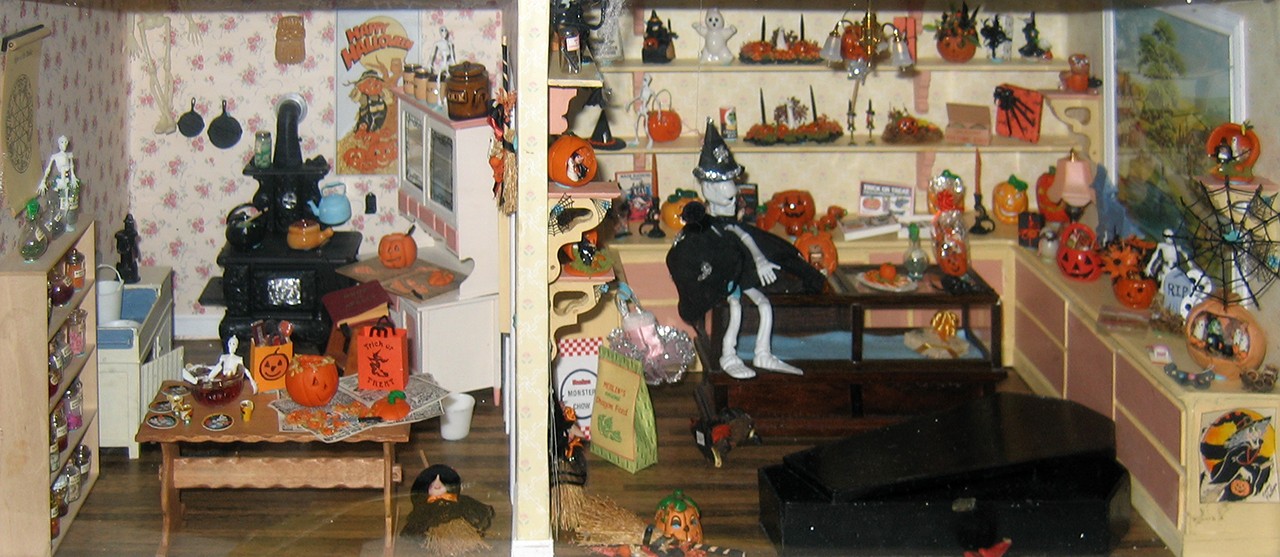 |
| Halloween-Themed Miniature Room, mid 20th Century Rita M. Ring (American, ?-1996); Orange County, California Wood and mixed media; 10 x 8 x 24 in. 96.32.10 Gift of the Estate of Rita M. Ring |
Carved Visage
Though all the Bowers Museum’s miniature rooms, made long ago by Rita M. Ring, have been deaccessioned, images linger as reminders of the objects that once were. This particular display is a Halloween scene split into two vignettes each with food shelves, jack-o’-lanterns, lighted pumpkins, a casket, spiders and other holiday bric-a-brac. Mrs. Ring made miniature rooms from around 1950 until the 1990s when she passed away. More than anything this hand-made microcosm demonstrates just how pervasive pumpkins have become as Halloween icons. Just about every surface of the model is covered with pumpkins that are faux-real, supposed to be ceramics, or trick-or-treat pails. Practically no matter where one looks around Halloween, they are liable to find pumpkins.
Text and images may be under copyright. Please contact Collection Department for permission to use. References are available on request. Information subject to change upon further research.

Comments